Table Of Contents
- What Are Linear Ball Bearings?
- Differences Between Linear Ball Bearings and Other Linear Bearings
- Differences in Mechanism
- Types of Linear Ball Bearings
- Advantages of Linear Ball Bearings
- Applications of Linear Ball Bearings
- Factors to Consider When Choosing Linear Ball Bearings
- How to Select the Best Linear Ball Bearing
- Trends and Innovations in Linear Ball Bearing Technology
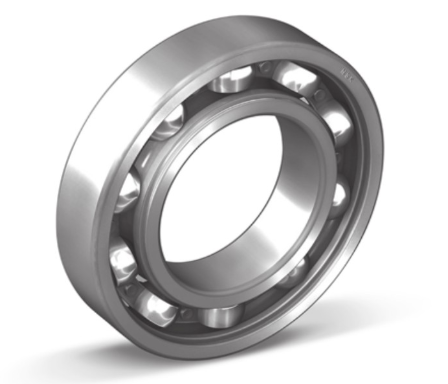 Linear motion is one-dimensional motion along a straight line. Linear motion is the most basic of all motion, and follows the concept of Newton’s First Law of Motion, which states that objects that do not experience any force will continue to move in a straight line with constant velocity. External forces, such as friction, can impact linear motion. In industrial applications, linear motion moves a load from one space to another in a straight line. Along with linear rails, linear ball bearings can move a load through a production process with great precision and little friction. While the guide system is very simple, the linear ball bearing is an essential component in facilitating smooth and precise motion.
Linear motion is one-dimensional motion along a straight line. Linear motion is the most basic of all motion, and follows the concept of Newton’s First Law of Motion, which states that objects that do not experience any force will continue to move in a straight line with constant velocity. External forces, such as friction, can impact linear motion. In industrial applications, linear motion moves a load from one space to another in a straight line. Along with linear rails, linear ball bearings can move a load through a production process with great precision and little friction. While the guide system is very simple, the linear ball bearing is an essential component in facilitating smooth and precise motion.
What Are Linear Ball Bearings?
Linear ball bearings are a type of bearing that support the load of a carriage during single-axis linear movement and provide a low friction sliding surface for the guide rail. The bearings support this carriage in this motion. The linear ball bearings reduce the friction during the movement along the axis. Linear ball bearings allow the carriage to move with excellent precision, better mounting, and smooth and even motion. Linear ball bearings are a critical component of a linear guide assembly.
Linear ball bearings differ from traditional plain bearings. Plain linear bearings rely on the sliding contact of two surfaces without a rolling element. Plain bearings have a more straightforward construction and simpler operating mechanisms than linear ball bearings. They do have high load capacity, lighter weight, and can absorb shocks. However, they have higher friction than linear ball bearings. Linear ball bearings, sometimes called rolling linear bearings, utilize balls or rollers as a rolling element housed between the grooves in the bearing and guide rails. The ball is proportional to the speed of the linear guide, and the contact angle determines the loading capacity of the linear bearing. Linear ball bearings have several advantages over plain bearings. Although they have a higher initial cost, they are far more durable, reliable, and require less maintenance over time. In addition, linear ball bearings have a much lower rate of friction than plain bearings.
There are several types of linear ball bearings used in linear guide systems, including:
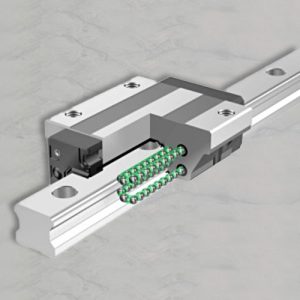
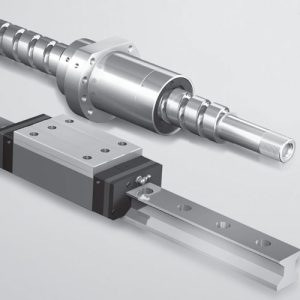
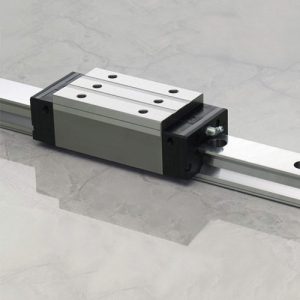
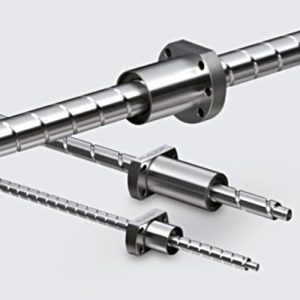
Differences Between Linear Ball Bearings and Other Linear Bearings
Linear movement is not limited to linear ball bearings. In addition to linear bearings, slides can be used as an option to facilitate linear motion in many linear guide systems and applications. The difference between linear ball bearings and other linear bearings, such as slides, is how the balls are used as rolling elements to minimize friction and enable a smoother, more precise linear motion. Rolling ball bearings have a coefficient of friction that is significantly less compared to sliding elements, such as the dovetail slide.
Sliding Elements in Linear Motion
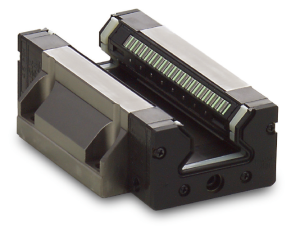 There are many different sliding element options for linear motion systems, such as boxway slides, dovetail slides, and sleeve-bearing slides but among these, dovetail slides are a popular option. Dovetail slides are a linear bearing that can be considered cost-effective for light duty applications. Dovetail slides, named for their shape, are ruggedly built and available in a wide variety of sizes and styles. Dovetail slides are typically used for positioning, as they are easier to lock to the angles and are able to bear large load capacity. High precision, high cycling, and increased speed are not always possible with sliding elements as linear bearings since the friction is increased when compared with linear rolling elements.
There are many different sliding element options for linear motion systems, such as boxway slides, dovetail slides, and sleeve-bearing slides but among these, dovetail slides are a popular option. Dovetail slides are a linear bearing that can be considered cost-effective for light duty applications. Dovetail slides, named for their shape, are ruggedly built and available in a wide variety of sizes and styles. Dovetail slides are typically used for positioning, as they are easier to lock to the angles and are able to bear large load capacity. High precision, high cycling, and increased speed are not always possible with sliding elements as linear bearings since the friction is increased when compared with linear rolling elements.
Rolling Elements in Linear Motion
Linear ball bearings are considered rolling elements in linear motion systems, as the balls are incorporated into the carriage to assist in bearing the load while providing low friction, high precision, and accurate positioning. Linear ball bushings are similar to linear slides, but instead of plain slides, they contain linear ball bearings, typically recirculating. This supports a more compact construction, and the radical recirculation allows for more load-bearing rows to be installed, and thus, larger load capacities in addition to increased precision and positioning alongside low friction.
Differences in Mechanism
The primary distinction between linear ball bearings and other linear bearings is the mechanism each type employs for linear motion. Linear ball bearings use recirculating balls, while other types utilize rollers, sliding surfaces, or other mechanisms. Some of the linear bearings that are used in linear guide systems include:
Plain Bearings
Plain bearings are similar to rolling element bearings, except that they do not incorporate ball bearings. Sometimes plain bearings are referred to as bushings. They are less rigid than rolling bearings, handle contamination well, and can handle a wide range of temperatures.
Dovetail Slides
Dovetail slides are among the most popular choices of sliding elements and are composed of a stationary linear base and a moving carriage, constructed in a “dovetail” or v-shape, with a channel that locks into the base. Dovetail slides have extended load carrying capabilities, are durable, resistant to contamination, and are often considered to be a more affordable initial investment.
Compound Slides
Compound slides are constructed with two or more sections with a fixed slide, floating slide, and a section that is attached to the equipment itself.
Rack Slides
Rack slides are specifically intended for mounting equipment onto racks of a predetermined length.
Roller Slides
Roller slides generally consist of a sleeve with several rows of balls in cages within the carriage. Rolling element slides are more rigid than other options and work well with hardened steel, but do not handle contamination well and require seals.
Ball Bearing Slides
Sometimes called “ball slides”, ball bearing slides offer smooth and precise motion aided by ball bearings housed in the linear base with self-lubricating properties that increase reliability.
The specific application’s needs often drive the choice between linear ball bearings and other linear bearings, such as slides. When building a linear motion system for your application, it is important to note your primary concerns for linear motion and customize a linear guide system that gives you the precision, accuracy, load-bearing capacity, vibration, and maintenance requirements that are the best fit.
Linear ball bearings are favored in applications requiring low friction, precise positioning, and a high degree of accuracy, while other types of linear motion components might be preferred in scenarios with heavy loads or different motion profiles. Other types of bearings may have less accuracy performance, and the object that is being guided may not move on its travel closely, making linear ball bearings the better choice when precision, accuracy, and low friction are among the top concerns for your unique linear motion system needs.
Types of Linear Ball Bearings
There are several different types of linear ball bearings with slight differences in construction, materials, and advantages in various applications. When choosing linear ball bearings, it is important to consider the application and which features are most important.
Non-Recirculating Linear Ball Bearings
Non-recirculating bearings have balls or rollers that are contained in a housing and directly support a load. As the bearing moves, the rolling elements rotate on their own axis, but do not travel within the housing. The length of the bearing limits the load, but because the rolling elements only rotate, they provide extremely smooth motion with a high degree of accuracy. High precision applications often require non-recirculating linear ball bearings.
Linear Recirculating Ball Bearings
Recirculating ball bearings move in circles continuously through a path within the bearing. This design allows for the bearing to travel any distance, regardless of the length of the bearing, and can support large loads. However, their accuracy is less than non-recirculating bearings and the maximum speed is limited. Recirculating bearings are often considered the “default” ball bearing for linear guide systems, as they will work in a variety of applications.
Linear Plain Bearings
Plain bearings do not operate according to the traditional rolling system but instead by sliding. Plain bearings are compact, lightweight, quiet, and less costly than rolling and recirculating bearings. Although they are not ball bearings, they do have their place in linear motion systems.
Linear Roller Bearings
Linear roller bearings come in standard sizes that are predetermined and are less able to be customized for a specific application. Roller bearings are not considered as accurate or smooth as other linear bearings.
Advantages of Linear Ball Bearings
Linear ball bearings offer a significant advantage over other options for linear motion systems. Linear ball bearings contribute to increased efficiency and reliability, with a decrease in downtime for linear motion systems in various industries. Some of the key benefits of using linear ball bearings include:
High Precision
Using linear ball bearings will give your linear guide system a high degree of precision and accuracy.
Low Noise
Linear ball bearings are able to bear large loads with less noise than other options, which is important in many industries.
Smooth Motion
Smooth motion of the linear guide system is important for many industries and will allow the application a longer lifespan.
Reduced Friction
Friction during linear motion can cause a variety of issues within the application. Linear ball bearings work to reduce that friction, allowing for smoother movement.
Minimal Wear
While wear is inevitable in many industrial applications, using linear ball bearings will reduce the wear on the system, allowing the system to operate for much longer without replacement.
Low Maintenance
Linear ball bearings are not maintenance-free and do require scheduled inspections and regular lubrication, but overall are considered a low-maintenance application in most industrial applications, which will reduce potential downtime.
Lower Operating Costs
Although linear ball bearings require an initial investment, due to their advantages of increased longevity, lower maintenance needs, and decreased downtime, they are the more cost-effective solution in the long run.
Linear ball bearings have improved performance and productivity in packaging industries, robotics, medical equipment, manufacturing, aerospace technology, and various other applications.
Applications of Linear Ball Bearings
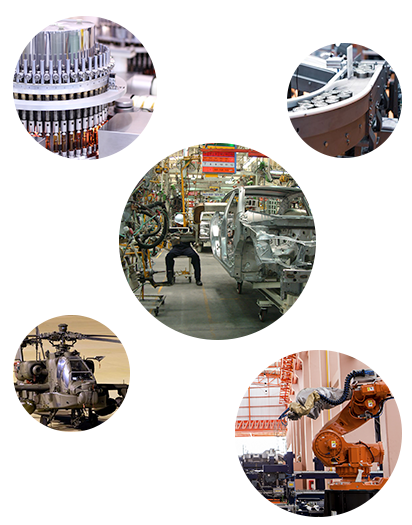 Linear ball bearings can be used in a wide range of industries and applications that utilize linear guide systems and rely on linear motion. Machines that use bearings include automobiles, airplanes, generators, everyday appliances, and more. For industrial applications, some of the most common industries include:
Linear ball bearings can be used in a wide range of industries and applications that utilize linear guide systems and rely on linear motion. Machines that use bearings include automobiles, airplanes, generators, everyday appliances, and more. For industrial applications, some of the most common industries include:
Manufacturing
Linear ball bearings are able to handle large load capacities, making them optimal for linear guide systems in manufacturing environments. Linear ball bearings will allow the system to bear the force of large loads without increased friction or vibration.
Robotics
With the high degree of precision of linear ball bearings in linear guide systems, they are able to increase the accuracy and precision of linear motion in a variety of robotics applications, including collaborative robots, surgical robots, and autonomous driving systems.
Aerospace
The aerospace industry, like robotics, requires a high degree of precision, making linear ball bearings a smart choice for linear systems in aerospace applications. Linear ball bearings have a low degree of vibration.
Medical Equipment
Medical equipment is subject to a high degree of regulation. The precision of linear ball bearings is paramount in this industry. In addition, medical equipment must be able to operate with little noise and no vibration, making linear ball bearings the right choice.
Packaging
Packaging is another industry where smooth operation and high load capacity are necessary, both of which are enhanced by using linear ball bearings in the guide system.
Factors to Consider When Choosing Linear Ball Bearings
There are several factors to consider when choosing linear ball bearings. Load capacity, speed, accuracy and precision, the environment in which the linear guide system will function, and maintenance requirements will all be considered. Different applications will influence which linear ball bearing should be used to ensure optimal performance and longevity. All linear guide systems are fully customizable, allowing each application the right components to match the needs.
Load Capacity
Load capacity is a big factor to consider when choosing linear ball bearings. Radial, thrust, and combined loads will all need to be considered. The force exerted by the weight of the load supported by the bearings, the transmission force, and other considerations all go into calculating the load capacity.
Speed Requirements
The speed of the linear guide system is also a factor in selecting linear ball bearings. Some materials are able to operate at a higher rate of speed than others.
Accuracy and Precision Requirements
Some industries and applications have a greater margin for error in the accuracy and precision of linear motion than others. When determining which linear ball bearings to choose, consider the precision you will need from your linear guide system.
Environmental Considerations
Where your linear guide system operates is often just as important as how it operates. Before choosing the linear ball bearings for a linear guide system, consider the environment. A linear guide system in a clean room and a linear guide system on a manufacturing floor will have different requirements.
Maintenance Concerns
Although linear guide systems require low maintenance, they are not maintenance-free. Linear ball bearings will need to be monitored for any potential issues and will require lubrication on a schedule. When choosing linear ball bearings, consider where they will be installed and the downtime that may be faced during maintenance. Some linear ball bearings are self-lubricating and require less frequent monitoring.
How to Select the Best Linear Ball Bearing
When you are ready to select the linear ball bearings needed for your project, you will need to consider all the factors discussed above.
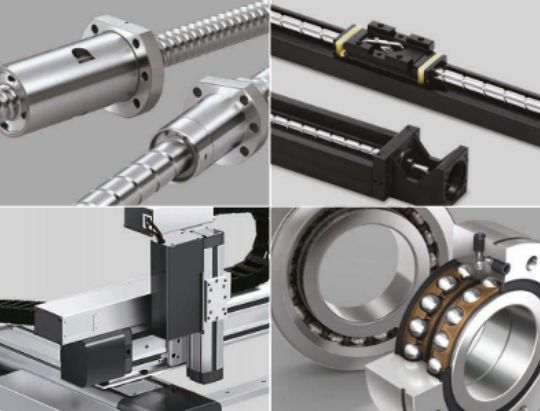
Determine the necessary load capacity
The load capacity is the amount of load a bearing can handle and is the most important factor in determining the right ball bearing. Bearing loads can be axial (where the force is parallel to the axis of the shaft), radial (when the force is perpendicular to the shaft), or a combination of both. Ball bearings are designed to distribute loads evenly. Radial bearings are best for light loads; axial loads require thrust ball bearings, and in a combined load, an angular contact bearing is the right choice. Roller bearings are best for large and heavy-load applications.
Rotational Speed is the next factor to consider
If your application requires high rotational speeds for operation, you will choose specific ball bearings that perform better at high speeds. Choosing ball bearings that can perform at high speeds will ensure that your application will work well with minimal vibration or damage to the linear guide or rail. High speed applications work best with angular contact bearings, as the balls are smaller, more lightweight, and produce less force.
Environmental Considerations are always a factor
While linear ball bearings are able to work effectively in a variety of environments, different materials will work better in different environments. It is important to know exactly where the linear guide system will be installed.
Although these are the main concerns when selecting a ball bearing for a linear guide application, in addition, it is important to consider the direction of motion, degree of precision required, frequency of use, and potential impact of vibration during use. Regular maintenance, such as inspection and regular lubrication, can extend the lifespan of linear ball bearings and prevent issues with misalignment and premature wear that can cause downtime.
Trends and Innovations in Linear Ball Bearing Technology
Even with a concept such as linear motion, which is based on very simple physics, there are always advances that spark innovation in linear ball-bearing technology. Some of the latest advancements in linear ball bearing technology include self-lubricating bearings, corrosion resistant coatings, and integrated sensor systems.
- Self-Lubricating Bearings – these bearings operate by incorporating lubricant within the sliding layer of the bearing.
- Corrosion Resistant Coatings – a nickel coating on the outer and inner rings of a linear ball bearing will enhance durability and allow the ball bearing to stand up to extreme temperatures and corrosive environments.
- Integrated Sensor Systems – integrated sensor systems will provide early indications of potential problems by assessing the vibration and temperature of the bearings, as well as other information.
These innovations address industry challenges that are always present and open up new possibilities for various applications. For example, without proper lubrication, stress is put on the linear guide system, friction will increase, and the guide system will face a drop in accuracy and precision. While this can be avoided with regular maintenance, a self-lubricating bearing will allow for a decrease in downtime due to scheduled maintenance. Corrosion resistant coatings will allow linear guide systems made up of linear bearings to operate in a greater variety of environments. Smart sensors will give the systems greater precision and can redefine the way linear ball bearings are used, particularly in industries that require a high degree of precision, such as medical and aerospace equipment. In the future, AI and IoT will advance even further in predictive maintenance and real-time monitoring, which will continue to elevate linear ball bearing capabilities.
Precision in Every Move with NSK Linear Ball Bearings
Linear ball bearings are important for linear guide systems in many different applications in modern engineering and across many industries. The benefits of using linear ball bearings are numerous and help achieve precise and efficient linear motion in a durable and long-lasting system. When designing a linear motion system, consider integrating linear ball bearings for enhanced performance and reliability.
Working with NSK to determine the ideal linear ball bearings for your unique application and industry will help you achieve smooth and accurate motion benefits for all your needs. NSK ball bearings are highly rated for performance and durability and are competitively priced without sacrificing quality. NSK is considered one of the top companies for reliable ball-bearing systems, and we can provide precisely what you need for optimal functionality.
